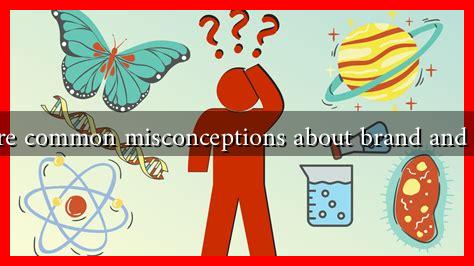-
Table of Contents
What Are Common Misconceptions About Brand and Content?
In the ever-evolving landscape of marketing, the terms “brand” and “content” are often used interchangeably, leading to a myriad of misconceptions. Understanding the nuances between these concepts is crucial for businesses aiming to establish a strong market presence. This article will explore common misconceptions about brand and content, providing clarity and actionable insights for marketers and business owners alike.
Misconception 1: Branding is Just a Logo
One of the most prevalent misconceptions is that branding is solely about creating a logo or a visual identity. While a logo is an essential component of branding, it is far from the entirety of what branding encompasses.
- Branding is an Experience: Branding involves the overall experience a customer has with a company, including customer service, product quality, and emotional connection.
- Branding is Strategic: Effective branding requires a strategic approach that includes market research, target audience identification, and consistent messaging.
- Branding Evolves: A brand is not static; it evolves based on consumer perceptions, market trends, and business growth.
For example, consider Apple. Their brand is not just their logo but encompasses innovation, quality, and a lifestyle that resonates with their audience. This holistic approach to branding has contributed to their loyal customer base and market dominance.
Misconception 2: Content is Only About Blogging
Another common misconception is that content marketing is limited to blogging. While blogs are a significant part of content marketing, they are just one piece of a much larger puzzle.
- Diverse Formats: Content can take many forms, including videos, podcasts, infographics, social media posts, and eBooks.
- Content is Multi-Channel: Effective content marketing involves distributing content across various platforms to reach a broader audience.
- Content is Value-Driven: The primary goal of content is to provide value to the audience, whether through education, entertainment, or inspiration.
For instance, HubSpot has successfully utilized various content formats, including webinars, eBooks, and social media campaigns, to engage their audience and establish themselves as thought leaders in the marketing space.
Misconception 3: Brand and Content are Separate Entities
Many marketers believe that branding and content are separate entities that do not influence each other. In reality, they are deeply interconnected.
- Content Reflects Brand Values: The content a brand produces should reflect its core values and mission, reinforcing its identity.
- Branding Enhances Content Reach: A strong brand can amplify the reach and impact of content, as audiences are more likely to engage with familiar brands.
- Consistency is Key: Consistent messaging across both branding and content helps build trust and recognition among consumers.
Take Nike, for example. Their content consistently reflects their brand ethos of empowerment and athleticism, whether through inspirational videos or social media campaigns. This synergy between brand and content has solidified their position in the market.
Misconception 4: More Content Equals Better Results
Another misconception is that producing a high volume of content will automatically lead to better results. However, quality often trumps quantity in content marketing.
- Focus on Quality: High-quality content that resonates with the audience is more likely to drive engagement and conversions than a large volume of mediocre content.
- SEO Considerations: Search engines prioritize quality content, meaning that well-researched and valuable articles are more likely to rank higher.
- Audience Engagement: Engaging content fosters a deeper connection with the audience, leading to brand loyalty and advocacy.
According to a study by HubSpot, companies that prioritize quality content see a 13 times higher ROI than those that focus solely on quantity. This statistic underscores the importance of creating meaningful content that adds value to the audience.
Conclusion
Understanding the common misconceptions about brand and content is essential for marketers and business owners looking to build a successful strategy. Branding is more than just a logo; it encompasses the entire customer experience. Content marketing is not limited to blogging; it includes various formats and channels. Moreover, branding and content are interconnected, and focusing on quality over quantity can yield better results.
By dispelling these misconceptions, businesses can create more effective branding and content strategies that resonate with their target audience, ultimately leading to increased engagement and loyalty. For further insights on branding and content marketing, consider exploring resources from HubSpot and Content Marketing Institute.

